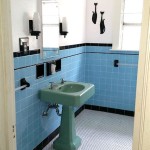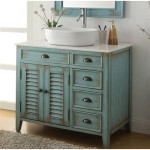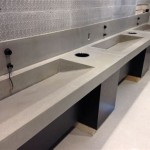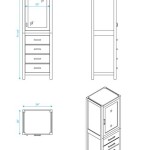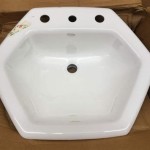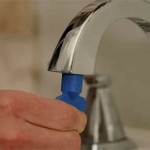How To Remove Ceiling Paint In Bathroom
Removing bathroom ceiling paint can be a necessary task for a variety of reasons. Perhaps the existing paint is peeling due to excessive moisture, or a remodel necessitates a color change that cannot be achieved with simple repainting. Regardless of the motivation, understanding the proper techniques and safety precautions is crucial for a successful outcome. This article details the steps involved in removing bathroom ceiling paint, providing comprehensive guidance for achieving a smooth and prepared surface for subsequent treatment.
Before initiating the paint removal process, a thorough assessment of the existing paint layers and the underlying ceiling material is essential. Identifying the type of paint used (e.g., latex, oil-based, epoxy) will influence the selection of appropriate removal methods and solvents. Determining the ceiling composition (e.g., drywall, plaster, wood) is equally important, as certain techniques and chemicals can damage delicate surfaces. Furthermore, the age of the paint may indicate the potential presence of lead, particularly in older homes. If lead is suspected, professional testing and abatement are strongly recommended to mitigate health risks.
Proper preparation of the bathroom is paramount to minimize mess and protect surrounding fixtures. This involves removing or covering all items that could be damaged by falling paint chips or cleaning solutions. Furniture should be moved out of the room, and any remaining items, such as the toilet, sink, and bathtub, should be thoroughly covered with plastic sheeting secured with painter's tape. The floor should also be protected with drop cloths or plastic sheeting. Adequate ventilation is vital, especially when using chemical strippers. Open windows and use a fan to circulate air, preventing the buildup of fumes.
Essential Tools and Materials
The following is a list of tools and materials needed to remove ceiling paint, depending on the chosen removal method:
*Scrapers:
A variety of scrapers, including a wide putty knife and a smaller detail scraper, will be necessary for physically removing loose or softened paint. Choose scrapers with sturdy blades and comfortable handles for prolonged use. *Heat Gun:
A heat gun can be used to soften paint, making it easier to scrape away. Use caution when using a heat gun to avoid overheating the paint and creating fumes or damaging the ceiling. *Chemical Stripper:
Chemical strippers are designed to dissolve paint, allowing it to be easily removed. Select a stripper that is appropriate for the type of paint being removed and the underlying ceiling material. *Paint Thinner or Mineral Spirits:
These solvents can be used to clean brushes, tools, and surfaces after using chemical strippers. They can also be effective for removing certain types of paint, particularly oil-based paints. *Spray Bottle:
A spray bottle can be used to apply water or other solutions to soften paint or clean surfaces. *Sponges and Rags:
Sponges and rags are necessary for cleaning surfaces and applying solutions. *Safety Glasses:
Safety glasses are essential to protect eyes from falling paint chips, dust, and chemical splashes. *Gloves:
Gloves protect hands from chemicals and sharp edges. Choose gloves that are resistant to the chemicals being used. *Respirator:
A respirator is crucial when working with chemical strippers or sanding paint, especially if lead is suspected. Choose a respirator with cartridges that are appropriate for the specific chemicals being used. *Drop Cloths or Plastic Sheeting:
Drop cloths or plastic sheeting protect the floor and surrounding fixtures from paint chips and cleaning solutions. *Painter's Tape:
Painter's tape is used to secure plastic sheeting and protect trim. *Sanding Block or Pole Sander:
A sanding block or pole sander will be needed to smooth the ceiling surface after the paint has been removed. Different grit sandpaper will be required, starting with a coarser grit to remove imperfections and finishing with a finer grit to create a smooth surface. *Joint Compound (Optional):
Joint compound may be needed to repair any damage to the ceiling surface after the paint has been removed. *Dust Mask:
Used for sanding, especially when lead paint is not suspected.Paint Removal Methods
Several methods exist for removing paint from a bathroom ceiling, each with its own advantages and disadvantages. The selection of the most appropriate method depends on the type of paint, the ceiling material, and personal preference. 1.Scraping:
This method involves physically removing the paint with a scraper. It is most effective for removing loose or peeling paint. To improve the effectiveness of scraping, the paint can be softened with water, heat, or a chemical stripper. This method is typically used in conjunction with other methods. *Dry Scraping:
This method involves scraping the paint without any pre-treatment. It is most effective for removing loose or peeling paint. Use a sharp scraper and apply steady pressure. Be careful not to damage the underlying ceiling surface. *Wet Scraping:
This method involves wetting the paint with water before scraping. The water helps to soften the paint, making it easier to remove. Use a spray bottle to apply water to the paint and let it soak for a few minutes before scraping. *Heat Gun Scraping:
This method involves using a heat gun to soften the paint before scraping. The heat helps to loosen the paint from the ceiling. Hold the heat gun a few inches away from the paint and move it slowly back and forth. Be careful not to overheat the paint or damage the ceiling. 2.Chemical Stripping:
Chemical strippers are designed to dissolve paint, allowing it to be easily removed. This method is effective for removing multiple layers of paint or paint that adheres tightly to the ceiling. *Application:
Apply the chemical stripper to the paint using a brush or roller, following the manufacturer's instructions. Ensure that the stripper is applied evenly and covers the entire surface to be treated. Allow the stripper to dwell for the recommended time, as indicated on the product label. This allows the chemicals to penetrate and soften the paint layers. *Removal:
After the dwell time, use a scraper to remove the softened paint. The paint should come off easily, but the process may require multiple passes to remove all traces of the paint. Be careful not to damage the underlying ceiling surface. Dispose of the removed paint and stripper properly. *Neutralization:
After removing the paint, neutralize the stripper according to the manufacturer's instructions. This will prevent the stripper from continuing to react with the ceiling surface. 3.Sanding:
Sanding is used to smooth the ceiling surface after the paint has been removed. It can also be used to remove small amounts of paint or to feather the edges of remaining paint. *Coarse Sanding:
Use a coarse-grit sandpaper to remove any remaining paint or imperfections from the ceiling surface. *Fine Sanding:
Use a fine-grit sandpaper to smooth the ceiling surface and prepare it for priming and painting. Sanding should be done evenly to ensure a uniform surface. Use a sanding block or pole sander to reach the ceiling comfortably. *Dust Removal:
After sanding, thoroughly remove all dust from the ceiling surface with a vacuum cleaner or damp cloth.Safety Precautions
Safety is paramount when removing bathroom ceiling paint. Chemical strippers can release harmful fumes, and sanding can create dust that can be harmful to breathe. The following safety precautions should be followed:
*Ventilation:
Ensure adequate ventilation by opening windows and using a fan. *Personal Protective Equipment:
Wear safety glasses, gloves, and a respirator to protect eyes, skin, and lungs. *Lead Paint Precautions:
If lead paint is suspected, have the paint tested by a professional. If lead paint is present, follow lead abatement procedures or hire a professional to remove the paint. *Chemical Handling:
Follow the manufacturer's instructions when using chemical strippers. Avoid direct contact with skin and eyes. *Fire Safety:
When using a heat gun, be careful not to overheat the paint or ignite flammable materials. Keep a fire extinguisher nearby.After the paint removal process is complete, thorough cleaning and preparation of the ceiling surface are essential for ensuring proper adhesion of the subsequent primer and paint layers. Remove all dust, debris, and residual cleaning solutions with a damp sponge or cloth. Allow the ceiling to dry completely before proceeding to the next step.
Repair any imperfections in the ceiling surface, such as cracks or holes, with joint compound. Apply the compound smoothly and evenly, feathering the edges to blend seamlessly with the surrounding surface. Allow the compound to dry completely, and then sand it smooth. Remove all dust from the ceiling surface before priming.
Apply a high-quality primer to the ceiling surface. The primer will create a uniform surface for the paint to adhere to, and it will also help to prevent the paint from peeling or blistering. Select a primer that is appropriate for the type of paint being used and the bathroom environment. Apply the primer evenly and allow it to dry completely before painting.
Finally, apply two coats of high-quality bathroom paint to the ceiling surface. Choose a paint that is designed for bathrooms, as it will be mildew-resistant and able to withstand high humidity levels. Apply the paint evenly, allowing each coat to dry completely before applying the next. With careful preparation and execution, a freshly painted bathroom ceiling can enhance the aesthetics and functionality of the space for years to come.

How To Fix Ling Paint On A Ceiling In 4 Steps Tribble Painting

Ling Paint On Ceiling 5 Useful Tips To Fix The Royal Home Painters Toronto Richmond Hill Markham

How To Repair A Ling Bathroom Wall Or Ceiling Melanie Lissack Interiors

How To Fix Paint Ling Off The Bathroom Ceiling

How To Fix Ling Paint On A Ceiling In 4 Steps Tribble Painting

Operation Bathroom Remodel Removing A False Ceiling Swoon Worthy

Ling Paint On Ceiling 5 Useful Tips To Fix The Royal Home Painters Toronto Richmond Hill Markham

How Do I Fix My Flaking Ceiling Inspirations Paint

How To Repair A Ling Bathroom Wall Or Ceiling Melanie Lissack Interiors

Operation Bathroom Remodel Removing A False Ceiling Swoon Worthy
Related Posts

